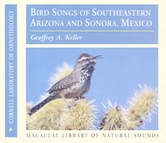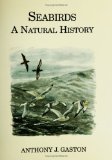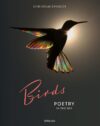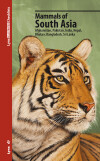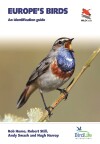An excellent audio guide from the Cornell Lab of Ornithology, and essential for anyone birding this region.
All Posts
December 19, 2008
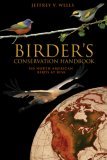
Birder’s Conservation Handbook: 100 North American Birds at Risk
Reviews, Books, Miscellaneous | Comments (0)by Jeffrey V. Wells
An excellent resource for birders, ornithologists, conservationists, wildlife managers – anyone!
It seems like there has been a ton of book reviews lately. I seem to recall something happening in a couple of weeks that might have something to do with that. But whatever the reason, I’m loving it. Anyways, here are some of them.
- Birdscapes: A Pop-Up Celebration of Bird Songs in Stereo Sound
- Owls of North America
- The Arizona Breeding Bird Atlas
- Egg & Nest
- Rare Birds Yearbook 2009
- Red-Tails in Love: A Wildlife Drama in Central Park
- Birding For Everyone: Encouraging People of Color to Become Birdwatchers
- Atlas of Bird Migration: Tracing the Great Journeys of the World’s Birds
Hopefully, you’ve gotten all of your Christmas shopping done by now. But just in case, here are some suggestions for any bird bibliophile in your life.
Field Guides
No birder will ever mind getting another field guide. I don’t think it’s even possible to have too many! Here are the latest for North America.
-

National Geographic Field Guide to the Birds of
Eastern North America
Western North America
Jon L. Dunn and Jonathan AlderferThe venerable NatGeo field guide has now been split into eastern and western editions, a la The Sibley Guide. There are some added features in these new ones, making them worthwhile to most birders, especially anyone who does not have the full 5th edition.
-

Peterson Field Guide to Birds of North America
Roger Tory PetersonThe opposite of the NatGeo guides above, the previously separate Peterson guides have been combined into this volume. Peterson’s classic art has never looked better.
Full Review
Fun Reading
Field guides, family monographs, and other such books are great, but every once in a while it’s good to relax with a light, fun book.
-

Birdscapes: A Pop-Up Celebration of Bird Songs in Stereo Sound
Miyoko ChuYes, you read that right – a pop-up book. But this is unlike any pop-up book you had as a kid. It is amazingly elaborate, educational, and just plain fun.
-

A Supremely Bad Idea: Three Mad Birders and Their Quest to See It All
Luke DempseyAn irreverent, and often hilarious, look at what happens when someone gets bitten hard by the birding bug.
Full Review -

A Guide to the Birds of East Africa
Nicholas DraysonNo, this isn’t in the wrong section – this is actually a novel. I haven’t had the chance to read it yet (it’s high up in my pile, though), but from what I understand it is a delightful read.
Other Books
And all the rest…
-

Albatross: Their World, Their Ways
Tui De Roy, Mark Jones, and Julian FritterThis is an absolutely gorgeous, as well as informative, book. It is probably the best non-identification-related family book that I have seen. Anyone with even the slightest interest in these fascinating birds should love this book.
-

The Owl and the Woodpecker: Encounters With North America’s Most Iconic Birds
Paul BannickFantastic photography and a really interesting approach make this a great gift.
Full Review -

The Life of the Skies: Birding at the End of Nature
Jonathan RosenThis is a hard book to sum up in a sentence or two. It is part history of birdwatching, and part treatise on why one birds. But without a doubt it is the best birding book that I have read this year, and possibly ever.
The paperback (shown here) will be available on December 23. The hardcoveris available now.
Full Review
Other Stuff
- Born Again Birdwatcher has a great list of gift suggestions
- Birdchick has a gift guide, and also posts about a birder gift site – Magnificent Frigatebird – that has some great tshirts and even underwear, among other things.
The most important bird books may not be the latest and greatest field guides, or the bird-finding guide to that birding mecca you’ve always wanted to visit. It may very well be books for kids. They can be instrumental in imparting a life-long love for the natural world. They were for me.
A fellow Georgia birder, Dan Vickers, has graciously allowed me to reprint his recommendations for bird books for children from an article he wrote for the Georgia Ornithological Society. Here are his suggestions, along with some of my own:
Children Ages 2-5
-
 Good-Night, Owl!
Good-Night, Owl!
Pat Hutchins
1990, 32 pages, ColorThis is one of the all-time favorite children’s books. All poor Owl wants to do is sleep, but he keeps being awakened by the other noisy occupants of the forest.
-
 Owl Babies
Owl Babies
Martin Waddell and Patrick Benson
2002, 32 pages, ColorWonderful illustrations showcase this story of three owlets awaiting their mother’s return from her night’s hunt.
-
 Make Way for Ducklings
Make Way for Ducklings
Robert McCloskey
1941, 68 pages, ColorThis classic story of a mother’s devotion has fascinated children for generations. McCloskey received the Caldecott award for his illustrations.
-
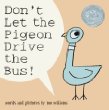 Don’t Let the Pigeon Drive the Bus!
Don’t Let the Pigeon Drive the Bus!
Mo Willems
2003, 40 pages, ColorKids love this wonderful tale of a pigeon trying to convince a busload of people (and the reader) to let him drive the bus after the driver steps off for a break.
Children Ages 4-8
-
 The Burgess Bird Book for Children
The Burgess Bird Book for Children
Thornton W Burgess
2003, 272 pages, Black and WhiteA creative story about the feathered friends such as Jenny Wren, Redwing the Blackbird, Melody the Wood Thrush, Spooky the Screech Owl, Creaker the Purple Grackle, and Downy the Woodpecker.
-
 Song for the Whooping Crane
Song for the Whooping Crane
Eileen Spinelli and Elsa Warnick
2000, 48 pages, ColorVisually and poetically captivating, this ode to the most celebrated endangered species of our time will stir an environmental awareness in any child.
-
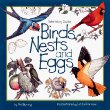 Birds, Nests, & Eggs
Birds, Nests, & Eggs
Mel Boring
1998, 48 pages, ColorID tips on 15 birds and the homes they build. This book contains a series of activities, 7 pages for notes or scrapbooking, and numerous safety tips.
-
 Owls
Owls
Adrienne Mason
2004, 32 pages, ColorEasy-to-read with plenty of detailed descriptions of the owls and how they live, eat, and hunt.
-
 About Birds: A Guide for Children
About Birds: A Guide for Children
Cathryn Sill
1997, 40 pages, ColorVarious North American species are illustrated in this beginner’s guide to birds. Lots of basic information is followed by an afterward which lists more detailed life histories.
-
 Backyard Birds (Peterson Field Guides for Young Naturalists)
Backyard Birds (Peterson Field Guides for Young Naturalists)
Jonathan Latimer, Karen Stray Nolting, and Roger Tory Peterson
1999, 48 pages, ColorA first field guide for your young birder, it describes 20 common birds as only a Peterson Field Guide could.
-
 Beginning Birdwatcher’s Book: With 48 Stickers
Beginning Birdwatcher’s Book: With 48 Stickers
Sy Barlowe
2000, 32 pages, ColorKids can record sightings of 48 common North American birds, with sticker images, and notes on location, date and any remarks.
-
 Bird Log: A Kids Journal to Record Their Birding Experiences
Bird Log: A Kids Journal to Record Their Birding Experiences
Deanna Bryant
1998, 80 pagesThis is a log book for children to record their sightings. It provides observation questions to help fill in the information.
Children Ages 9+
-
 The Young Birder’s Guide to Birds of Eastern North America (Peterson Field Guides)
The Young Birder’s Guide to Birds of Eastern North America (Peterson Field Guides)
Bill Thompson, III and illustrated by Julie Zickfoose
2008, 256 pages, Color, PaperbackThis new Peterson Field Guide, written just for kids, gives detailed descriptions and vivid illustrations of 200 birds in Eastern North America.
-
 The Last Egret (The Adventures of Charlie Pierce)
The Last Egret (The Adventures of Charlie Pierce)
Harvey E. Oyer III
2010, 168 pages, some black-and-white drawingsA wonderful adventure story in which Charlie Pierce learns the value of birds and nature. This is a great introduction to the idea of conservation. (Full Review)
-
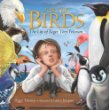 For the Birds: The Life of Roger Tory Peterson
For the Birds: The Life of Roger Tory Peterson
Peggy Thomas (Author) and Laura Jacques (Illustrator)
2011, 43 pages, color paintings, hardcoverThis book is worth it just for the gorgeous illustrations. But it also tells the story of Roger Tory Peterson’s life (he of the field-guide fame), while encouraging children to pay attention to nature and the birds around them. That makes this a great book for kids ages eight and up.
Thanks, Dan!
Here are some recent bird and nature book reviews from around the web.
- Smithsonian Field Guide to the Birds of North America
- The LBJ (Literary Bird Journal)
- Birdwatcher: The Life of Roger Tory Peterson
- Birds: Mini Edition: The Art of Ornithology
- Finding Birds On The Great Texas Coastal Birding Trail: Houston, Galveston, and the Upper Texas Coast
- Birdscapes: A Pop-Up Celebration of Bird Songs in Stereo Sound
- Salt Tide: Currents of Nature and Life on the Virginia Coast
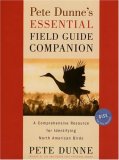 In my review of Pete Dunne’s Essential Field Guide Companion I state that it belongs in the library of every North American birder. I just want to share a quick scenario that illustrates just how essential this guide really is.
In my review of Pete Dunne’s Essential Field Guide Companion I state that it belongs in the library of every North American birder. I just want to share a quick scenario that illustrates just how essential this guide really is.
Suppose you’re in the Lower Rio Grande Valley of Texas in late fall, and you hear of a vagrant Dusky-capped Flycatcher that was found at a nearby refuge. Having never seen one, you decide to head down and try for it. Naturally, you prepare by checking out what the bird looks like in your field guide and listen to its vocalizations on your mp3 player of choice.
When you arrive, you hear a sound that you’ve never heard before – a long, pure, slightly descending whistle. It doesn’t really sound like the recordings of your target, so you spend a little time trying to pish out the hidden bird, but when it doesn’t cooperate, you move on.
A few minutes later you run into another birder who has just heard the flycatcher. You follow them back to the spot you heard that weird sound, and quickly realize that it had been your intended quarry all along. Naturally, it stops calling at this point, so you start looking around trying to find the bird visually. Knowing that its relative, the Great-crested Flycatcher, hawks insects from mid-to-high up in trees, that’s where you look. But of course you see nothing.
At this point, the birder has made two mistakes that could have been prevented by reading the flycatcher’s account in Pete Dunne’s book. First, one couldn’t help but seeing the very first statement in the vocalization section: “Most commonly heard vocalization is a plaintive, smoothly descending, whistled ‘wheeer?'”. That perfectly describes the sound you heard, and certainly would have been nice to know before hearing it.
It would also have been helpful to know where to look for the bird. Pete writes:
Likes to hunt in confines that are tight – places so tight that only a tiny Myiarchus can weave a path – and low – lower than the canopy-haunting Brown-crested Flycatcher. As a rule, does not sit conspicuously high and does not forage above the canopy.
In other words, in the exact opposite place that you were looking.
By now you should have guessed that our hypothetical birder isn’t really hypothetical at all. Yep, it was me. In my defense, I should say that I didn’t have room in my baggage to bring much reference material, so I wasn’t able to read this beforehand. Thankfully, the visitor’s center at the Audubon Sabal Palm Sanctuary, where the bird was found, had a good selection of books for sale. This book was the first I turned to, and it was then that I found out I had been looking in the wrong places.
I have since checked many sources, and Dunne’s book is the only one I’ve found that mentions this bird’s preferred foraging location.
I did not see the dusky-capped on that first attempt, but I was able to return the next morning for another attempt. This time I arrived even earlier, and I knew what I was looking and listening for. When it finally started calling, another birder and I set out to track it down. After a search that seemed like it took much longer than it actually did, we finally laid eyes on our hard-earned lifer.
It was in some low, dense vegetation. Right where Dunne’s guide said it would be.
by Anthony J. Gaston
An exploration of the ecology of seabirds, especially how and why they are so different from landbirds.
Awesome. There’s no better word to describe a birder’s experience at the Rio Grande Valley Birding Festival. Of course the birds are great – where else can you see White-collared Seedeater, Ferruginous Pygmy-owl, Green Parakeet, Green Jay, and many, many others? But there was also the Birder’s Bazaar, a huge area where dealers, organizations, optics companies, and others could show their wares. I was very pleased to find many books among them! And of course there were the seminars, workshops, and keynote speakers (including a wonderful one on warblers by none other than Kenn Kaufman).
But one of the best things about my week in Texas was meeting many fellow birders. It’s been said many times, but it bears repeating: birders are a wonderful group of people! It was truly great to meet and bird with all of you.
I’m not much of a photographer, so I don’t have many pictures to share. But here are a few places where you can get your fill:
- Birdchick
- Round Robin
- Born Again Birdwatcher
- Flying Mullet
- Wildbird on the Fly
- 10,000 Birds
- Bill of the Birds
- Birding to the EDG
- Eagle Optics
I need to specifically mention one exhibitor – Burning Hawk Wine. Earlier this year, a hawk in California was killed by some power lines and sparked a fire in a vineyard. This event inspired Nick Papadopoulos to do something about it. In just a short while, a multitude of individuals and groups rallied behind the cause. They are now marketing special bottles of wine to raise money to combat this problem. The story, and what they are trying to accomplish, is truly inspiring. Check them out to find out more about them, and how you can help.
Between my time in Texas and some work-related training this week, I haven’t had much time to work on reviews or anything else. Hopefully I can start to make a dent in the ever-growing stack of books that need reviewing…
October 31, 2008
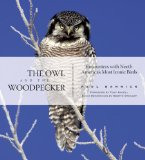
The Owl and the Woodpecker: Encounters With North America’s Most Iconic Birds
Reviews, Books, Family Guides | Comments (1)by Paul Bannick
This impressive book will lead to a much greater appreciation of these birds and their relationships to their environment and each other.

